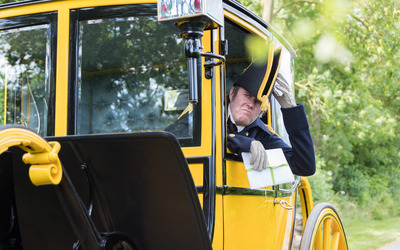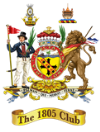The great tacticians and warriors of history are well celebrated in history books and wider culture, but those who delivered the messages that could make or break history are often forgotten.
1. Marathon Man.
Possibly the most famous messenger in history, the legend goes that this unnamed soldier fought in the Battle of Marathon in 490BC, and then ran 26 miles to notify the people of Athens of their victory. He is remembered today through the marathon, a 26 mile race that replicates this feat of endurance.
2. G.I. Joe.
Believe it or not this plucky fellow was actually a carrier pigeon. During the Italian Campaign of WW2 in 1943, the American army called for bombers to take out German positions in the picturesque village of Calvi Vecchia However, the village was subsequently captured by the British Army. G.I. Joe raced to deliver the news, and flew 20 miles in an incredible 20 minutes! He arrived just in time to prevent the airstrike, saving 1000 men.
3. The White Mouse.
After France surrendered to Axis forces in 1940, Nancy Wake became a courier and spy for the French resistance. The Gestapo, frustrated by Wake’s ability to elude capture, dubbed her “The White Mouse”. She was known for being ruthless and cunning, once killing an SS sentry with her bare hands to prevent him from sounding the alarm during a raid. By 1943 there was a 5 million franc bounty on her head.
4. Hikyaku
The Hikyaku, also called the “flying legs”, were couriers for the Shogunate governments of Japan’s medieval period. They were known to average 80 miles a day, and ran in all conditions, wearing little more than a loincloth and sandals. With their help, the Shogunate created a sophisticated network of information stretching from Hokkaido all the way to Nagasaki.
5. John Richards Lapenotiere.
By 1805, paranoia in England over the possibility of a French invasion had reached fever pitch, especially after French forces had landed at Fishguard in 1797! Contemporary propaganda revealed the farcical fears that the French would invade via hot air balloon or even by burrowing under the channel. After the decisive victory at Trafalgar on the 21st October, the Franco-Spanish fleet was destroyed, along with Napoleon’s hopes of invading England.John Richards Lapenotiere, in the speedy HMS Pickle, made the journey from Trafalgar to Falmouth in under two weeks, and subsequently journeyed to London by non-stop post-chaise, making the journey in just 37 hours.
While news of Nelson’s death was a tragedy, the news of the victory calmed the public’s fear of Napoleon mounting an invasion.
Which other famous messengers can you think of?
Let us know or tweet us @TheTrafalgarWay







